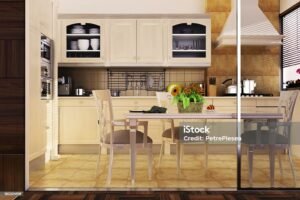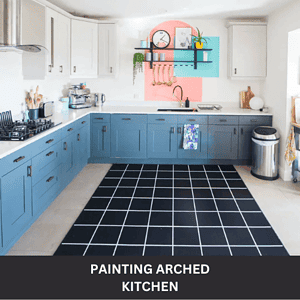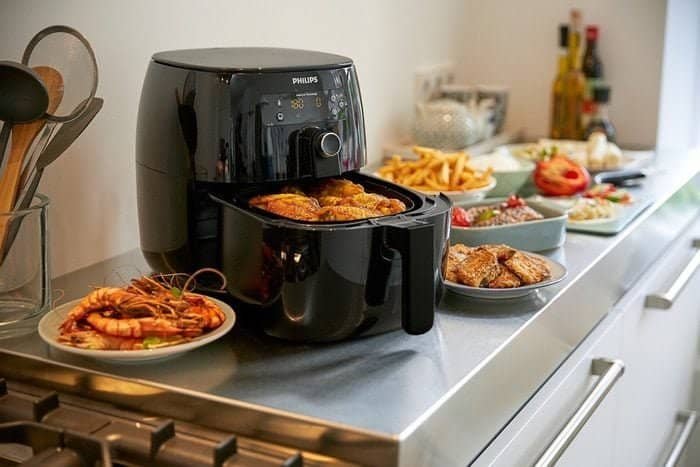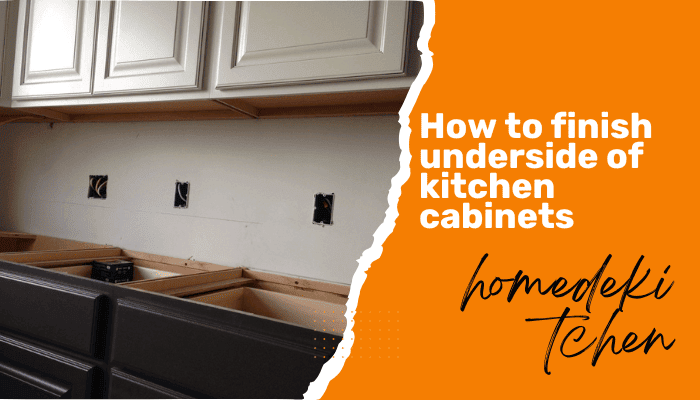The kitchen is often the heart of a home, a place where families gather to cook, eat, and share their daily experiences. It’s essential for the kitchen to be functional and efficient, offering plenty of storage and a welcoming atmosphere. How to Maximizing Kitchen Space is one of the key elements which impacting overal aesthetics of your kitchen. To achieving this balance is the careful selection of kitchen cabinets and niches. In this blog, we will explore the art of how to maximizing kitchen space through well-designed cabinets and niches.
Choosing the Right Kitchen Cabinets: To Maximizing Kitchen Space






1. Determine Your Budget
Before embarking on your kitchen cabinet selection journey, to maximizing kitchen space it’s essential to establish a clear budget. Kitchen cabinets can vary significantly in price, so knowing how much you’re willing to spend will help you narrow down your options and avoid overspending. Your budget will also influence your choices in terms of materials, finishes, and additional features.
2. Consider Your Kitchen Layout
Your kitchen’s layout plays a pivotal role in determining the type and placement of cabinets. The three main types of kitchen cabinets are:
- Base Cabinets: These sit on the floor and provide your primary countertop space. They are ideal for storing pots, pans, and larger kitchen appliances. The placement of base cabinets is crucial for an ergonomic kitchen layout.
- Wall Cabinets: Mounted on the wall above the countertop, wall cabinets offer additional storage space for dishes, glassware, and pantry items. Consider the height of these cabinets to ensure they are easily accessible.
- Pantry Cabinets: Pantry cabinets are tall and narrow, offering vertical storage for dry goods, canned items, and kitchen essentials. The inclusion of pantry cabinets depends on the available space and your storage needs.
3. Material Selection
The material of your kitchen cabinets greatly impacts their durability, appearance, and maintenance requirements. Here are some common materials used for kitchen cabinets:
- Wood: Wooden cabinets provide a classic and timeless look. Varieties like oak, maple, cherry, and birch offer distinct appearances. Wooden cabinets can be stained or painted to suit your preferred style.
- Laminate: Laminate cabinets are budget-friendly and easy to clean. They come in a variety of colors and patterns, making them a versatile choice.
- Metal: Metal cabinets offer a sleek, modern appearance and are highly durable. Stainless steel, for example, is a popular choice in contemporary kitchens.
4. Cabinet Finishes
Cabinet finishes play a significant role in determining the overall aesthetic of your kitchen. The choice of finish can transform the appearance of your cabinets. Common cabinet finishes include:
- Painted Finish: A painted finish adds color to your kitchen and can be customized to match your kitchen’s color scheme. It’s a popular choice for achieving a clean and contemporary look.
- Stained Finish: Stained finishes enhance the natural grain of wood and provide a warm, traditional appearance. They are perfect for achieving a rustic or classic kitchen style.
- Glossy Finish: Glossy finishes are modern and sleek, giving your cabinets a polished and reflective surface. These finishes are often seen in high-end, contemporary kitchens.
5. Cabinet Styles
The style of your kitchen cabinets contributes to the overall visual appeal of your kitchen. There are several cabinet styles to choose from, including:
- Traditional: Traditional cabinets often feature raised panel doors, intricate details, and molding, creating a classic and timeless look.
- Modern: Modern cabinets are characterized by clean lines, minimalistic design, and sleek hardware. They create a contemporary and uncluttered appearance.
- Transitional: Transitional cabinets combine elements of both traditional and modern styles, offering versatility and a balanced aesthetic.
6. Hardware and Accessories
The choice of cabinet hardware, such as handles and knobs, can greatly impact the cabinet’s style. Additionally, consider accessories like pull-out shelves, lazy Susans, and drawer dividers to enhance the functionality of your cabinets.
7. Color and Design Coordination
Ensure that your cabinet choice complements the overall design and color scheme of your kitchen. It’s essential that the cabinets harmonize with other elements, including countertops, backsplash, flooring, and appliances.
8. Environmental Considerations
If you’re environmentally conscious, you may want to choose cabinets made from sustainable materials. Look for certifications like the Forest Stewardship Council (FSC) to ensure that the wood used in your cabinets is responsibly sourced.
9. Consult a Professional
When in doubt, or if you have a complex kitchen layout, it’s advisable to consult with a professional kitchen designer or cabinet specialist. They can provide expert guidance, create customized designs, and ensure that your cabinets are the perfect fit for your kitchen.
In conclusion, choosing the right kitchen cabinets to maximizing kitchen space involves careful consideration of your budget, kitchen layout, materials, finishes, styles, and hardware. It’s a decision that should not be rushed, as the cabinets play a significant role in the functionality and aesthetics of your kitchen. Take your time to explore various options, seek professional advice when needed, and ensure that your chosen cabinets align with your vision for a beautiful and functional kitchen space.
Designing Kitchen Niches: To Maximizing Kitchen Space
Designing kitchen niches to maximizing kitchen space is a creative way to enhance the functionality and style of your kitchen. Niches are specialized areas or built-in features that serve specific purposes, such as storage or display. Whether you have a small or spacious kitchen, designing niches can help you make the most of your available space. In this guide, we’ll explore the art of designing kitchen niches.
1. Identifying the Purpose of Your Kitchen Niches
Before you start designing kitchen niches, it’s essential to determine their purpose. The functionality of your niches will guide the design process. Here are some common purposes for kitchen niches:
- Spice Racks: Create a niche with adjustable shelves to store spices, herbs, and condiments. This keeps your seasonings organized and within easy reach while cooking.
- Appliance Garages: These niches are designed to house small kitchen appliances like toasters, coffee makers, or blenders. Appliance garages help keep your countertop clutter-free.
- Wine Racks: For wine enthusiasts, a niche with wine storage can be a stylish addition. You can opt for open wine racks or enclosed niches with glass doors.
- Display Shelves: Showcase your favorite dishes, glassware, or decorative items by designing open display niches with adjustable shelves and built-in lighting.
- Cutting Board or Knife Storage: Design a niche with a pull-out cutting board and slots for storing knives. This creates a functional food preparation area within your cabinets.
2. Customization and Built-Ins
Customizing your niches allows you to tailor them to your specific needs and kitchen layout. Here are some design elements to consider:
- Built-In Niches: These niches are seamlessly integrated into your kitchen’s design, maximizing the use of space. They are often built during the initial kitchen construction or during a renovation.
- Niche Lighting: Proper lighting in niches is essential to ensure that items stored within are well-lit and easy to find. Consider under-cabinet lighting or in-cabinet LED lights to illuminate the niche’s contents.
- Adjustable Shelving: Shelves in your niches should be adjustable to accommodate items of various sizes. This flexibility is especially important if you plan to store dishes, kitchenware, or decorative items.
- Glass Doors: For display niches, glass doors can add a touch of elegance while protecting your items from dust and dirt. Choose frosted or clear glass, depending on your preferred style.
3. Maximizing Space Efficiency
Efficient use of space is a key aspect of designing kitchen niches, especially in smaller kitchens. Here are some strategies to make the most of your niche space:
- Pull-Out Shelves: Install pull-out shelves or drawers within your niches to maximize access and visibility. These are great for storing pots, pans, or pantry items.
- Drawer Dividers: Use dividers to keep your niche drawers organized, whether you’re storing utensils, cutlery, or baking supplies.
- Lazy Susans: Lazy Susans are rotating trays that can be installed in corner niches. They make it easy to access items in hard-to-reach places.
- Corner Niches: Utilize corner spaces by installing L-shaped or diagonal niches, which are perfect for storing small kitchen appliances or dishes.
- Small Kitchen Solutions: If you have a small kitchen, consider designing niches for vertical storage. Narrow cabinets can hold baking sheets, cutting boards, or trays.
4. Aesthetics and Integration
The design of your niches should seamlessly integrate with the overall look and style of your kitchen. Consider the following:
- Cabinet and Niche Colors: Ensure that the color of your niches matches or complements your kitchen cabinets and decor.
- Trim and Molding: Incorporate trim or molding to give your niches a finished look that blends with the rest of your kitchen design.
- Backsplash and Tile: Coordinate your niche design with the kitchen backsplash or tile to create a cohesive and harmonious look.
- Focal Point: If you’re designing a display niche, make it a focal point by adding unique decorative items or contrasting colors.
5. Safety and Accessibility
While designing niches, keep safety and accessibility in mind. Make sure that the niche is easily accessible and that the items stored within are secure. If you have young children, consider childproofing your niches to prevent accidents.
6. Maintenance and Cleaning
Lastly, consider how easy it will be to clean and maintain your niches. Some niche designs may have more nooks and crannies that can collect dust and debris, so choose designs that are easy to clean.
In conclusion, designing kitchen niches is a creative and practical way to make the most of your kitchen space. Whether you’re aiming to add storage, create a display area, or organize specific items, carefully planning the purpose, customization, and integration of your niches will result in a more functional and beautiful kitchen. Whether you’re renovating your existing kitchen or designing a new one, niches can be a valuable addition to your kitchen’s layout and design.
Maintenance and Care: Maximizing Kitchen Space
Proper maintenance and care of your kitchen cabinets are essential to ensure their longevity and to keep your kitchen looking its best. Whether you have wooden cabinets, laminate cabinets, or any other type, regular upkeep can prevent damage and keep your cabinets in top condition. In this guide, we will cover the key aspects of maintenance and care for your kitchen cabinets.
1. Cleaning Your Kitchen Cabinets
Regular cleaning is the cornerstone of kitchen cabinet maintenance. Here’s how to clean different cabinet materials:
- Wood Cabinets: Use a mixture of warm water and a gentle, pH-balanced wood cleaner. Wipe down the cabinets with a soft cloth or sponge. Avoid abrasive cleaners or scrubbing pads, as they can damage the finish. Dry the cabinets immediately to prevent water damage.
- Laminate Cabinets: Laminate cabinets are relatively easy to clean. Use a mild all-purpose cleaner or a mixture of water and vinegar. Avoid abrasive scrubbers that can scratch the surface. Dry the cabinets thoroughly to prevent water spots.
- Metal Cabinets: Stainless steel cabinets can be cleaned with warm, soapy water or a stainless steel cleaner. Wipe in the direction of the grain to avoid streaks or damage. Dry the cabinets to prevent water spots or staining.
2. Preventing Damage
To extend the life of your kitchen cabinets, take measures to prevent damage:
- Use Cabinet Liners: Place cabinet liners or shelf liners to protect the interior of your cabinets from spills, stains, and damage.
- Soft-Close Hinges: If your cabinets have soft-close hinges, use them to prevent slamming doors and potential damage.
- Avoid Extreme Temperatures: Maintain a stable temperature in your kitchen to prevent expansion and contraction of the cabinet materials.
- Protect Against Moisture: Use coasters for glasses and be cautious with hot cookware to prevent watermarks and heat damage.
3. Regular Inspections
Frequent inspections of your kitchen cabinets can help identify and address issues before they become major problems:
- Check for loose hinges or handles and tighten them when needed.
- Look for signs of water damage or leaks under the sink and around the dishwasher.
- Inspect the cabinet joints and corners for any separation or cracks.
4. Repairing Minor Damage
For minor damage like scratches or dents, you can consider these solutions:
- Wood Cabinets: Minor scratches can be concealed with a touch-up kit or wood filler. Apply the appropriate finish or stain to match your cabinets.
- Laminate Cabinets: Scratches on laminate cabinets can be camouflaged with a laminate repair pen. These pens are available in various colors to match your cabinets.
- Metal Cabinets: Stainless steel cleaner can help minimize the appearance of scratches on metal cabinets. For deeper scratches, a stainless steel scratch remover may be necessary.
5. Refinishing Your Cabinets
Over time, your cabinets may show signs of wear and tear, and their finish may become faded or damaged. When this happens, refinishing your cabinets can breathe new life into your kitchen. Here are the steps for refinishing:
- Remove the cabinet doors and hardware.
- Sand down the old finish to prepare the surface.
- Apply a new coat of paint, stain, or finish that matches your desired look.
- Reinstall the cabinet doors and hardware once the finish is dry.
Refinishing can be a DIY project, but for a professional and durable result, consider hiring a cabinet refinishing expert.
6. Regularly Declutter and Organize
Regularly declutter your kitchen cabinets by removing items you no longer need. This not only keeps your cabinets organized but also prevents overloading them, which can lead to damage over time. Make use of organizational accessories like pull-out shelves, drawer dividers, and Lazy Susans to keep your cabinets tidy and efficient.
7. Childproofing Your Cabinets
If you have young children, consider childproofing your cabinets to keep them safe. Install cabinet locks or latches to prevent access to hazardous materials or sharp objects.
8. Seek Professional Assistance
If you notice significant damage or structural issues with your cabinets that you can’t address yourself, consider hiring a professional cabinet repair or restoration service to ensure the job is done correctly.
FAQs
1. What are the different types of kitchen cabinets?
- There are several types of kitchen cabinets, including base cabinets, wall cabinets, and pantry cabinets. Base cabinets are found at the floor level, wall cabinets are mounted on the wall above countertops, and pantry cabinets are tall and narrow, often used for storing dry goods.
2. How do I choose the right material for my kitchen cabinets?
- The choice of material for your kitchen cabinets depends on your style, budget, and maintenance preferences. Common materials include wood, laminate, and metal.
3. What finishes are available for kitchen cabinets?
- You can choose from painted finishes, stained finishes, or glossy finishes for your kitchen cabinets. The finish you select can significantly impact the overall look of your kitchen.
4. What are some popular cabinet styles for kitchens?
- Common cabinet styles include traditional, modern, and transitional. Traditional cabinets are classic with intricate details, modern cabinets have clean lines, and transitional cabinets blend elements from both styles.
5. What are kitchen niches, and what purposes do they serve?
- Kitchen niches are specialized areas or built-in features within your kitchen cabinets. They can serve various purposes, such as storing spices, housing small appliances, displaying items, or providing specialized storage.
- 1. How should I clean wood cabinets?
- Use a mixture of warm water and a gentle, pH-balanced wood cleaner to clean wood cabinets. Wipe them down with a soft cloth or sponge, and avoid abrasive cleaners or scrubbing pads.
- 2. Can I use abrasive cleaners on laminate cabinets?
- It’s best to avoid abrasive cleaners on laminate cabinets, as they can scratch the surface. Instead, use a mild all-purpose cleaner or a mixture of water and vinegar.
- 3. What should I use to clean stainless steel cabinets?
- Stainless steel cabinets can be cleaned with warm, soapy water or a stainless steel cleaner. Wipe in the direction of the grain to avoid streaks or damage.
- 4. How often should I inspect my kitchen cabinets for damage?
- Regularly inspect your kitchen cabinets for damage, loose hardware, or signs of wear. It’s a good practice to do this at least once a year.
- 5. What should I do if I notice scratches or minor damage to my cabinets?
- Depending on the cabinet material, you can use touch-up kits, wood fillers, or laminate repair pens to address minor scratches and damage.
- 6. How can I refinish my kitchen cabinets?
- Refinishing your cabinets involves removing the doors and hardware, sanding the old finish, applying a new coat of paint, stain, or finish, and then reinstalling the doors and hardware.
- 7. How do I childproof my kitchen cabinets?
- To childproof your cabinets, consider installing cabinet locks or latches to prevent young children from accessing hazardous materials or sharp objects.



